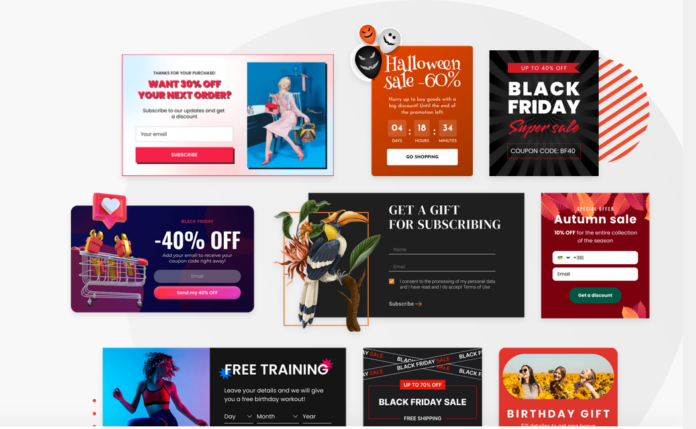Cultivating real and lasting connections stands as a paramount task for businesses. As competition intensifies and consumer expectations rise, companies should pivot to more innovative methods of engagement. This is where the power of an effective tool, such as a pre order website template, comes into play. Not only do they streamline business operations, but they also provide a unique opportunity to gather invaluable feedback directly from your audience. Stay tuned to know how harnessing this feedback can forge deeper ties, ensuring customers feel heard, valued, and integral to your brand’s journey.
Foundations of Effective Customer Engagement
Engaging with customers encompasses building a rapport that stands the test of time. To truly resonate with your audience, businesses need to understand the underlying principles that drive successful and meaningful interactions.
The Role of Pre-Order Templates in Engagement
Pre-order templates are gateways to early customer interactions. By giving customers an opportunity to express interest in a product before its official release, these templates act as early touchpoints. This not only provides businesses with valuable insights into demand and preferences but also creates a sense of exclusivity and value for the customers. When executed correctly, pre-order strategies can bolster anticipation, drive initial sales, and lay the foundation for post-launch engagement.
Key Principles of Building Strong Customer Relationships
- Listen Actively: In the age of digital noise, genuine listening is a rarity. Pay attention to customer feedback, be it through reviews, surveys, or casual interactions. This not only helps in addressing pain points but also signals to customers that their voice matters.
- Maintain Consistency: Consistency in your brand message, service quality, and interaction can set reliable expectations for your customers. This reliability breeds trust and loyalty.
- Add Value Continuously: Beyond transactions, think of ways you can continuously add value to the customer experience. This could be through educational content, loyalty programs, or exclusive offers.
- Foster Open Communication: Encourage open channels of communication where customers feel free to express concerns, provide feedback, or ask questions. Transparent communication humanizes a brand and strengthens the bond between the business and its customers.
By anchoring your engagement strategies in these principles and leveraging tools like pre-order templates, businesses can create a sustainable cycle of trust and loyalty with their audience.
Delving into Pre-Order Templates: Features and Benefits
By offering customers a sneak peek into upcoming releases and gauging their interest upfront, businesses can finetune their offerings and strategies.
Why Pre-Order Templates Enhance Customer Experience
- Anticipation and Excitement: Giving customers a glimpse of what’s coming creates a buzz and a sense of excitement. This anticipation can boost initial sales and drive word-of-mouth marketing.
- Exclusivity: By allowing customers to pre-order, businesses can make them feel special and valued, fostering a sense of belonging and loyalty.
- Informed Decisions: Customers appreciate being in the know. Pre-order templates provide them with all the necessary information about a product, helping them make informed purchase decisions.
- Early Feedback Opportunity: With pre-orders, businesses can receive feedback even before the product hits the market. This can be invaluable for making last-minute tweaks or improvements.
Success Stories of Pre-Order Feedback
The potential of pre-order feedback often lies in the shadows of product development, yet its impact can be transformative. By listening to their customers before a product hits the shelves, businesses have been able to pivot, refine, and launch with confidence.
Lessons from Leading Brands: Strategies that Worked
- Continuous User Feedback: Fitbit, a leading player in the wearable tech industry, was on the brink of launching a new fitness tracker. Knowing the competitive landscape and understanding the value of customer insights, they decided to initiate a pre-order campaign. With every pre-order, they encouraged customers to share feedback on what they expected and hoped for from the upcoming device. While customers were enamored with the design, there were concerns about battery life and compatibility with specific apps and platforms. Using this feedback, Fitbit took additional weeks to address these issues, enhancing the battery’s longevity and ensuring wider app compatibility.
- Transparency is Key: Apple, known for its electronic gadgets, always maintained transparency in its pre-order campaigns. Whenever they made changes based on feedback, they promptly communicated these changes to their customers. This strategy not only kept customers in the loop but also reinforced trust.
- Value-driven Incentives: Gucci, a fashion titan, offered value-driven incentives for their pre-order feedback, such as exclusive access to fashion shows or limited-edition merchandise. By providing tangible value, they saw a 40% increase in feedback submissions.
- Engage through Community Forums: Electronic Arts (EA), a behemoth in the gaming industry, set up community forums where users could discuss their pre-ordered games, share feedback, and even pitch ideas for game improvements. This fostered a sense of community, and the real-time feedback allowed the company to tweak games in development.
Navigating Challenges and Pitfalls
While pre-order feedback systems present immense opportunities for companies to refine their products and improve customer relations, they’re not without their challenges.
Common Mistakes to Avoid with Pre-Order Feedback Systems
- Overpromising and Under Delivering: While it’s tempting to showcase all potential features during the pre-order phase, it’s crucial not to promise what you can’t deliver. This will only lead to disappointed customers and damage to your brand reputation.
- Ignoring Feedback: Simply collecting feedback isn’t enough. Ignoring or not acting upon the feedback can lead to mistrust among customers who feel their voices aren’t valued.
- Lack of Transparency: Not updating customers about changes made based on their feedback, or keeping them in the dark about any delays or issues, can erode trust and confidence in your brand.
Conclusion
Navigating the intricacies of pre-order feedback systems can be challenging, but with awareness of common pitfalls and a commitment to continuous improvement, businesses can harness their power to foster stronger customer relationships and drive success.



































